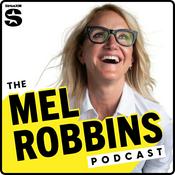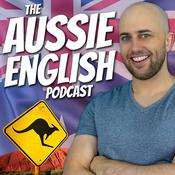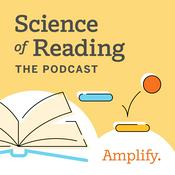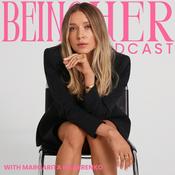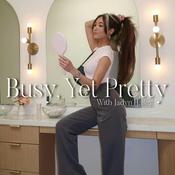90 episodes

Learning to Stay Present in a World That Won’t Slow Down
15/12/2025 | 33 mins.
This practice began the way so many moments in life do: with the eyes open.I’ve been paying closer attention to vision lately—not just what I’m looking at, but how I’m looking. Our vision shapes how we take in information, which shapes how we think, which shapes how we react. When my attention feels scattered or overwhelmed, it’s often because my field of awareness has collapsed down to a single problem, a single thought, a single irritation.So we began this meditation by resting the eyes on one simple point in front of us. A wall. A picture. A patch of light. And then, without losing that focal point, we gently widened the view—allowing peripheral vision to come online.This is the same skill we need in traffic when someone cuts us off. We can stay focused on the road and aware of the wider field. We don’t have to collapse into the moment or harden around it.When the eyes closed, we carried that same principle inward.The breath became our anchor. In and out. Rhythm. Pace. And then—space. Not just the movement of breathing, but the room the breath moves through. The space in the nose, the throat, behind the eyes, and the crown of the head. Breathing becomes less of a task and more of a relationship with the body.At work, when deadlines stack up or emails keep arriving, this practice shows us another option: you can stay engaged without being clenched. You can focus without losing your sense of space.As we stayed with the breath, thoughts naturally appeared. Planning thoughts. Old memories. Emotional reactions. Instead of trying to push them away, we practiced meeting them the same way we met the breath—with patience, curiosity, and compassion.This is especially useful in relationships. When a familiar argument starts looping in your head, you don’t have to solve it right away. You can notice it. Feel how it shows up in the body. And remember: thoughts arise, change, and pass.This is where impermanence reveals itself.Every breath dissolves and recreates the moment. Every sensation shifts. Even tension, when met with space and attention, begins to change. In parenting, in caregiving, in moments of physical discomfort—this truth can soften our resistance. Nothing is frozen. Nothing stays the same.As the practice widened, attention opened to the body as a whole. Sensations blurred at the edges. The body breathed itself. The system took care of itself.Meditation isn’t about clearing anything out. It’s about becoming a better steward of what’s already here.We closed by welcoming gratitude—not as something to manufacture, but as something to notice. Gratitude for breathing. For showing up. For the quiet effort it takes to care for yourself.Eyes open or eyes closed, it turns out we’re always practicing. The same rules apply. And that’s the beauty of it.💬 Let’s Reflect Together* Where in your life do you notice your attention becoming narrow or rigid?* What changes when you allow space around uncomfortable sensations?* How do your thoughts behave when you meet them with curiosity instead of control?* Where could impermanence offer relief rather than uncertainty?* What does it feel like to care for yourself without trying to fix anything?Share your reflections in the comments—I’d love to hear how impermance is alive in your practice.Follow me on all the socials* Substack* Website* Instagram* Facebook* YouTube This is a public episode. If you would like to discuss this with other subscribers or get access to bonus episodes, visit sitwalkwork.substack.com

Stop the Spiral: How 20 Connected Breaths Create Emotional Space
03/12/2025 | 9 mins.
When I guide this practice, I’m always struck by how quickly the mind can spiral — and how quickly the breath can interrupt that spiral. Most of us don’t need more advice or more willpower. We need a small wedge of space inside the moment where everything feels tight, urgent, or overwhelming.Today’s meditation is that wedge.In this episode, I lead you through a breath sequence called 20 Connected Breaths. It’s simple: inhale, exhale, inhale, exhale — four times — followed by one big inhale and a soft release. That’s one round. We repeat the cycle so you can feel layers of tension dissolve without forcing anything.But the real practice isn’t just breathing.It’s learning to interrupt your body’s momentum.Because spirals don’t just happen in the mind — they happen in the chest, the jaw, the shoulders, the nervous system. And when you learn to regulate the breath, you regulate the spiral.I see this every day, not just on the cushion:* Traffic: That flash of irritation when someone doesn’t move at a green light. One connected breath creates room for patience instead of frustration.* Work stress: Before the email sends you spinning, the breath grounds you enough to answer instead of react.* Parenting: When your kid refuses to put on their shoes, breath becomes the difference between snapping and staying steady.* Relationships: When someone says something sharp, breath turns defensiveness into curiosity.* Body discomfort: When tension rises, connected breathing keeps you from bracing, gripping, or shutting down.Through each round of the practice, you’ll hear me invite you to soften the effort. That’s intentional. Spirals thrive on force — on trying harder, pushing more, doing something. This breathwork teaches the opposite: presence over performance.Some rounds will feel smooth.Some will feel clunky.Some will energize you.Some may challenge you.All of that is part of the practice.As the meditation closes, we return to simple nasal breathing and relaxed shoulders — the embodied reminder that you can come back to yourself at any moment. You can interrupt the spiral. You can choose your next move.Thank you for practicing with me.May these breaths find you in the moments you need them most. Repeat as needed. May you be well.💬 Let’s Reflect Together* What situations most often trigger your spirals — and what do you feel in your body first?* Which round of the breathing practice felt the easiest or the hardest for you?* Where could you use more emotional space in your everyday life?* Think of a recent moment when you reacted quickly — how might one slow breath have changed the outcome?* How does your body tell you it’s time to pause?* What part of the spiral do you want to interrupt this week?Share your reflections in the comments—I’d love to hear how impermance is alive in your practice.Follow me on all the socials* Substack* Website* Instagram* Facebook* YouTube This is a public episode. If you would like to discuss this with other subscribers or get access to bonus episodes, visit sitwalkwork.substack.com

How to Work With Thoughts: A Guided Meditation for Busy Minds
01/12/2025 | 32 mins.
Lately, I’ve been thinking a lot about how noisy the inner world can get. There’s so much happening out there—globally, collectively, personally—that by the time we sit down, the mind is already in motion. Buzzing. Planning. Replaying. Solving. Trying to help, even if it sometimes feels like too much help.In this week’s guided practice, I wanted to focus on something simple and powerful: the quality of our thinking mind and how breath becomes the anchor that steadies the whole system. When life gets fast, we forget that our breath is right there—always available, always adjusting, always influencing our nervous system.So I opened the practice by inviting listeners to watch the breath, not just observe it passively. We worked with coherent breathing—matching the inhale and the exhale—which is one of the quickest ways to remind the body that it’s safe. I see this all the time in real life:* When I’m stuck in traffic, trying not to escalate with the guy who cuts me off,* When a tense conversation with a partner brings heat into the chest,* When a work deadline starts tightening my shoulders,* or even when parenting demands stack up, and the breath feels shallow and rushed.Coherent breathing is a reset button. Not for the world, but for your body’s ability to meet the world.Then we turned toward the thoughts themselves. Not to stop them or fix them, but to notice their tone. Were they helpful? Judgmental? Anxious? Hopeful? Time traveling to the past or sprinting to the future?I think about this often when my mind leaps ahead to all the things I still need to do, or replays something I should’ve handled differently. Meditation reminds me that both are just mental places—useful sometimes, unhelpful other times, and definitely not the moment happening right now.We moved from thoughts into the body, noticing how thinking lands physically—tightness, temperature, pressure. Because thoughts aren’t just ideas; they’re sensations that ripple through space. The moment you feel your chest soften or your jaw unclench, you realize the body has been carrying the story the mind was telling.And then, maybe my favorite part of this practice: spaciousness.Not the dramatic, cosmic kind. Just the simple space that’s always already here—between inhale and exhale, between thoughts, between sensations. The space that reminds you you’re allowed to step back from whatever feels overwhelming.It’s like when stress builds up at work, or a relationship feels tight; the moment you widen your perspective even a little, the pressure changes. You remember what’s possible.We closed the session by gently transitioning back into the world—because meditation isn’t an escape. It’s training. It’s practice for re-entering your life with a little more clarity, a little more grounding, and a lot more compassion for yourself.If anything stood out for you during the session, I encourage you to explore it. Sometimes the smallest moment becomes the most important insight.Until next time—may you be well, may your breath be steady, and may your mind feel just a little more spacious.Let’s Reflect Together* What kind of thoughts showed up most often during the practice—supportive, anxious, critical, hopeful?* Where did you notice spaciousness in your experience: the breath, the silence, the body, or somewhere unexpected?* How do you usually respond when you get distracted—can you practice “starting over” with compassion?Share your reflections in the comments—I’d love to hear how impermance is alive in your practice.Follow me on all the socials* Substack* Website* Instagram* Facebook* YouTube This is a public episode. If you would like to discuss this with other subscribers or get access to bonus episodes, visit sitwalkwork.substack.com

Come Back to Your Body: A Guided Body Scan for Stress and Overthinking
26/11/2025 | 14 mins.
There are days when my mind feels like it’s sprinting while my body is still back at the starting line. On those days, I return to this simple practice — moving attention slowly through the body, sensation by sensation, breath by breath. Not to fix anything. Not to force calm. But simply to notice what’s here.When I guide this practice, I always begin with the reminder that there’s no ideal state waiting for us. We’re not doing meditation “right” or doing it “wrong.” We’re just meeting the moment as it unfolds — breath to breath, sensation to sensation, sometimes softer, sometimes louder.So today, I invite you to feel the weight of your own body. Right now, something is holding you — the chair, the floor, the bed. Most of us go an entire day without recognizing that. When I finally pause long enough to notice the support beneath me, something inside unclenches. It’s like the difference between gripping the steering wheel in traffic and suddenly remembering I can drop my shoulders.As I move attention from the head to the toes, I like to imagine I’m turning up the dimmer switch on each part of the body. In the jaw, maybe I’m clenching after a hard conversation. In the belly, maybe I’m bracing for an email I haven’t answered yet. In the eyes, maybe I’m carrying the fatigue of too much time on screens.These aren’t problems to solve — they’re just places to feel.And what I love about this body-scan practice is how each sensation gives me a chance to reconnect with real life.In the shoulders, I might notice tension from holding my kid all day.In the hands, maybe the buzz of sending off a big project at work.In the legs, maybe the residue of being stuck in traffic or standing in line.The body remembers everything, even when we don’t.As I continue down the body, there’s always this moment where the practice widens — when I begin to feel the difference between the left and right sides. A little more warmth here, a little more aliveness there. Sometimes it feels like the sensations are shifting too quickly to keep track of. Other times everything feels still. Either way is okay. Either way is new.And if the mind wanders — because of course it will — I just come back to whatever part of the body is calling for attention. Sometimes that’s the belly rising and falling. Sometimes it’s the heavy warmth of the thighs. Sometimes it’s that tiny ache in the lower back that I’ve been ignoring all week.Breathing into those places isn’t about making the discomfort vanish. It’s about giving myself the space to feel without rushing to escape. When I practice this consistently, it changes the way I move through stress outside of meditation. A tense meeting becomes a place to notice my breath. A difficult conversation becomes a moment to soften my shoulders. Even an argument at home becomes a chance to feel my feet again.As we close practice, I always offer a moment of gratitude — not the performative kind, not the kind that bypasses difficulty, but the quiet acknowledgment that you showed up. Whether it’s your first time or your 50th, each practice is new. Each moment is new. And the only requirement is that you’re here.As you come back into your space, you might notice what carries over — a little more softness, a little more breath, a little more room to be with what’s here.Thank you for practicing with me.If you’d like to go deeper into this work of paying attention, we’re building a community over on Substack where these conversations continue to unfold.May you be well.And may this moment — just as it is — be enough.Let’s Reflect Together* Which part of your body is the easiest — or hardest — for you to feel during meditation?* When you’re stressed, where does tension show up first?* What everyday situation (traffic, a meeting, parenting, chores) could benefit from slowing down and noticing sensations?* Did breathing into discomfort shift anything for you emotionally or physically?Share your reflections in the comments—I’d love to hear how impermance is alive in your practice.Follow me on all the socials* Substack* Website* Instagram* Facebook* YouTube This is a public episode. If you would like to discuss this with other subscribers or get access to bonus episodes, visit sitwalkwork.substack.com

Slow Down and Pay Attention: A Meditation for Grounding Your Body and Breath
23/11/2025 | 31 mins.
I’ve been thinking a lot about what it means to show up for ourselves—not in the self-optimisation way we’re usually sold, but in the quiet, ordinary sense. The way we show up when we sit down, close our eyes, and let ourselves be a person again. Not a task list. Not an identity. Just… a person.In today’s practice, I invite you into a gentle reset. We begin with intention—an honest look at what brings you here. Sometimes the intention is clear (“I’m overwhelmed and I need help”). Sometimes it’s soft, more like a whisper beneath the noise of the day. Whatever rises is welcome.From there, we move into the body. A simple body scan, head to toe. Not to perfect anything, not to fix anything—just to feel what’s already happening. I think of it like arriving home and walking through the rooms, turning on the lights. “Oh, this is what’s here today.”This kind of presence shows up everywhere in real life:* When you’re stuck in traffic and your jaw is clenched so tightly you don’t realise you’re rehearsing an argument with someone who isn’t even there.* When your kid is melting down and you feel your shoulders creeping up toward your ears.* When a coworker sends that email and your breath shortens before you even read the whole thing.* When your body hurts, and the story you tell yourself about that pain is louder than the pain itself.The scan teaches us to feel without panicking, to notice without narrating. To recognise: “Oh, this is tension,” instead of, “Everything is wrong.”After the scan, we transition to the breath—this quiet metronome you’ve been carrying your entire life. I guide you to lay a simple mantra across the exhale: I am here for you.This phrase can be surprisingly uncomfortable. Sometimes the body doesn’t believe it. Sometimes the mind argues back. But that’s why we practice it. It’s a way of training ourselves to meet each moment the way a good friend would meet us—steady, warm, unhurried.When life throws something at you—an unexpected bill, a breakup, a mistake, an ache—you can remember this moment. This breath. This phrase. You can feel yourself re-entering the body instead of spiralling into the story.To close, we open the attention back up. Not forcing stillness. Not demanding peace. Just witnessing. Watching how sensations, thoughts, and emotions all rise and fall like the weather. And then offering yourself a little gratitude for showing up at all.That’s the heart of this practice:You must be here to benefit from it.And you made it.I’m grateful you’re here.I hope you’re grateful, too.Timestamp Breakdown 00:00–00:01:06 — Opening & Intention00:01:06–00:03:19 — Posture, Breathing, and Settling In00:03:19–00:07:05 — Orienting to the Moment & Emotional Tone00:07:05–00:15:03 — Full Body Scan: Head to Belly00:15:03–00:20:04 — Lower Body Scan & Grounding00:20:04–00:23:45 — Attuning to the Breath00:23:45–00:26:21 — Mantra Practice: “I Am Here For You”00:26:21–00:30:21 — Open Awareness & Witnessing00:30:21–00:31:42 — Closing & Gratitude💬 Let’s Reflect Together* Where in your body do you tend to hold tension during stressful moments?* How did the mantra I am here for you land for you—welcoming, resistant, or something in between?* What real-life situation this week could benefit from a 10-second body scan?* When you slow down and pay attention, what shifts first: your breath, your posture, or your thoughts?* Which part of the practice helped you feel most grounded?* How does witnessing your experience differ from reacting to it?Share your reflections in the comments—I’d love to hear how impermance is alive in your practice.Follow me on all the socials* Substack* Website* Instagram* Facebook* YouTube This is a public episode. If you would like to discuss this with other subscribers or get access to bonus episodes, visit sitwalkwork.substack.com
More Education podcasts
Trending Education podcasts
About Sit,Walk,Work (SW^2)
Listen to Sit,Walk,Work (SW^2), English Learning Podcast and many other podcasts from around the world with the radio.net app

Get the free radio.net app
- Stations and podcasts to bookmark
- Stream via Wi-Fi or Bluetooth
- Supports Carplay & Android Auto
- Many other app features
Get the free radio.net app
- Stations and podcasts to bookmark
- Stream via Wi-Fi or Bluetooth
- Supports Carplay & Android Auto
- Many other app features


Sit,Walk,Work (SW^2)
download the app,
start listening.








